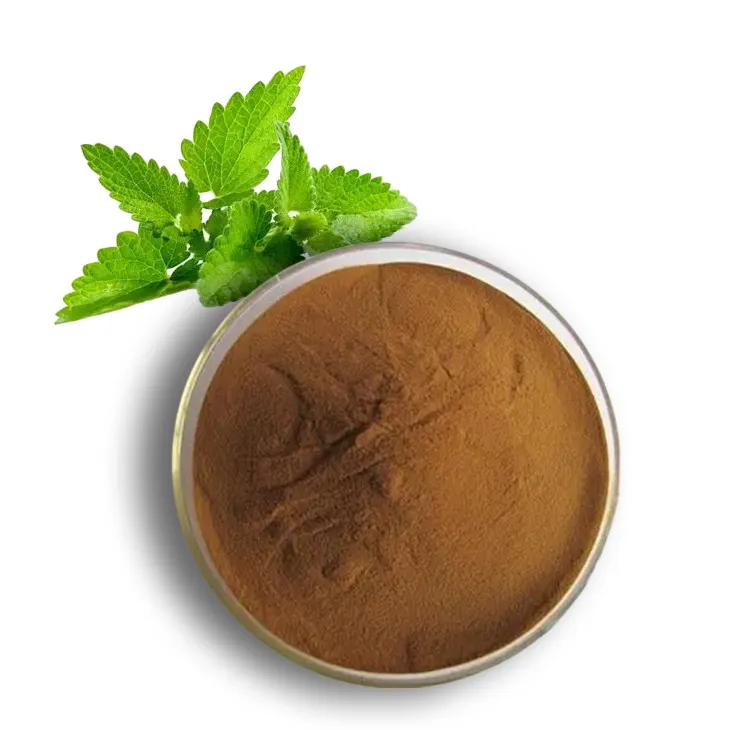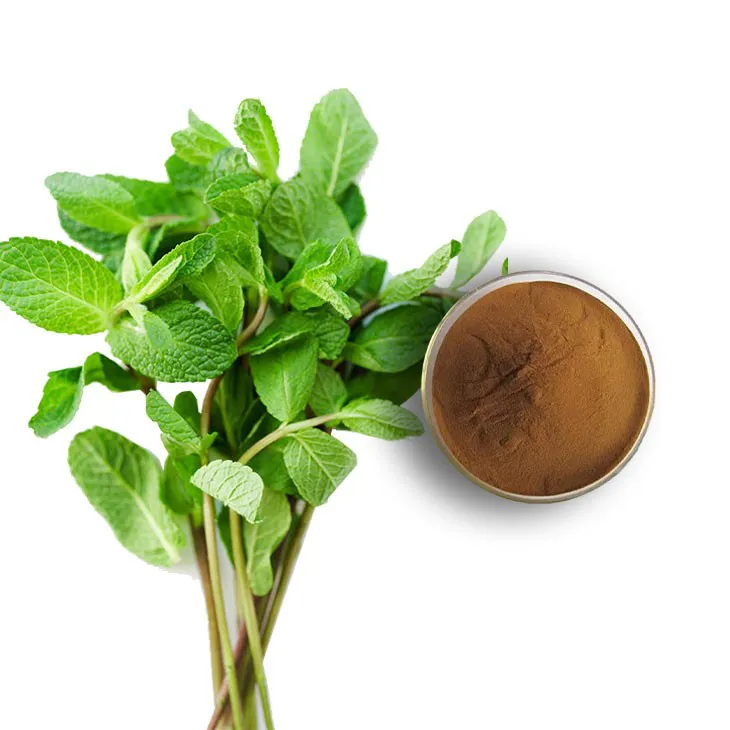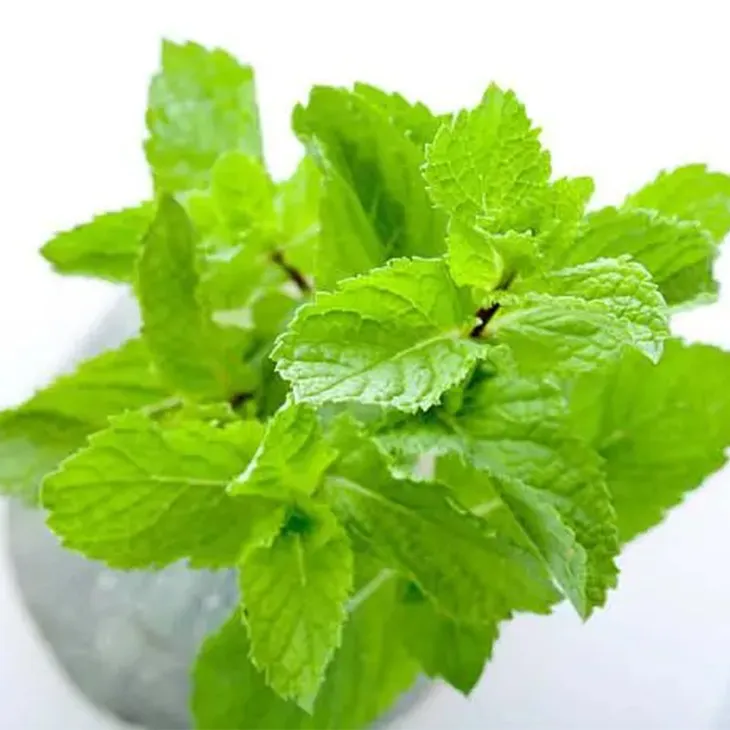- 0086-571-85302990
- sales@greenskybio.com
The best method for extracting peppermint extract powder.
2024-11-29

1. Introduction
Peppermint Extract Powder is highly valued in various industries, including the food, pharmaceutical, and cosmetic sectors. Its extraction is a crucial process that determines the quality, flavor, and potency of the final product. This article delves into the best methods for extracting Peppermint Extract Powder, providing a comprehensive understanding for both professionals and enthusiasts.

2. Understanding Peppermint
Peppermint (Mentha × piperita) is a hybrid mint, a cross between watermint and spearmint. It contains a variety of essential oils, such as menthol, which gives peppermint its characteristic cool and refreshing flavor. These oils are the main components that are targeted during the extraction process.

3. Traditional Extraction Methods
3.1. Steam Distillation
Steam distillation is one of the most common traditional methods for extracting peppermint essential oils, which can then be further processed into extract powder.
- The fresh or dried peppermint leaves are placed in a distillation apparatus.
- Steam is passed through the plant material. The heat from the steam causes the essential oil glands in the peppermint to rupture, releasing the essential oils.
- The steam - oil mixture then travels through a condenser, where it cools down and condenses back into a liquid. Since oil and water do not mix, the essential oil can be separated from the water layer.
- To obtain the extract powder, the separated essential oil can be dried using techniques like spray drying or freeze - drying. Spray drying involves spraying the oil in a fine mist into a hot drying chamber, while freeze - drying involves freezing the oil and then removing the moisture under vacuum.
- It is a well - established method, and there is a lot of existing knowledge and equipment available for it.
- It can produce a relatively pure essential oil, free from many impurities.
- The process can be time - consuming, especially when dealing with large quantities of peppermint.
- Some of the more volatile components of the Peppermint Oil may be lost during the distillation process due to the high heat involved.
3.2. Solvent Extraction
Solvent extraction is another traditional approach.
- A suitable solvent, such as ethanol or hexane, is chosen. Ethanol is often preferred in the food and pharmaceutical industries as it is relatively safe and can be easily removed from the final product.
- The peppermint leaves are soaked in the solvent. The solvent penetrates the plant cells and dissolves the essential oils and other soluble components.
- The solvent - extract mixture is then filtered to remove the solid plant material.
- To obtain the extract powder, the solvent is removed through evaporation under reduced pressure or other techniques. This leaves behind the peppermint extract, which can be further dried to form a powder.
- It can be more efficient at extracting a wider range of components compared to steam distillation, as some non - volatile components can also be extracted.
- It can be carried out at lower temperatures compared to steam distillation, which helps to preserve some of the more heat - sensitive components of peppermint.
- The choice of solvent is crucial. Some solvents may leave behind residues that are not suitable for certain applications, such as in the food or pharmaceutical industries.
- The process of removing the solvent completely can be challenging, and any residual solvent in the final product can be a problem.

4. Modern and Alternative Extraction Methods
4.1. Supercritical Fluid Extraction
Supercritical fluid extraction (SFE) has emerged as a modern and efficient method for Peppermint Extract Powder extraction.
- Carbon dioxide (CO₂) is the most commonly used supercritical fluid in this process. At specific pressure and temperature conditions (above its critical point), CO₂ exhibits properties of both a gas and a liquid, which makes it an excellent solvent for extracting peppermint components.
- The peppermint material is placed in an extraction chamber. Supercritical CO₂ is passed through the chamber, dissolving the essential oils and other desired components.
- The extract - laden CO₂ is then passed through a separator, where the pressure is reduced. This causes the CO₂ to return to its gaseous state, leaving behind the peppermint extract.
- The obtained extract can be further processed into powder form.
- It is a clean and environmentally friendly method, as CO₂ is non - toxic, non - flammable, and readily available.
- Since the extraction can be carried out at relatively low temperatures, it helps to preserve the integrity of the peppermint components, including the more volatile and heat - sensitive ones.
- It can produce a high - quality extract with a relatively pure composition.
- The equipment for supercritical fluid extraction is expensive, which can limit its use in small - scale or low - budget operations.
- The process requires precise control of pressure and temperature, which adds to the complexity of the operation.
4.2. Microwave - Assisted Extraction
Microwave - assisted extraction (MAE) is an alternative method that utilizes microwave energy.
- The peppermint sample and a suitable solvent (if required) are placed in a microwave - transparent vessel.
- The microwave radiation is applied. The microwaves heat the sample unevenly, creating hot spots within the material. This causes the cells to rupture more easily, releasing the essential oils and other components.
- The extract is then separated from the plant material, either by filtration or centrifugation.
- Subsequent steps can be carried out to convert the extract into powder form.
- It is a relatively fast method compared to traditional extraction methods. The microwave heating can significantly reduce the extraction time.
- It can be energy - efficient, as the microwaves directly heat the sample rather than heating a large volume of surrounding medium as in some other methods.
- The method requires careful optimization of microwave power and exposure time. Incorrect settings can lead to over - extraction or degradation of the components.
- There may be non - uniform heating issues, which can affect the reproducibility of the extraction process.
5. Factors Affecting the Extraction Quality
Several factors play a crucial role in determining the quality of peppermint extract powder obtained through extraction.
- Quality of raw material: The freshness, variety, and growing conditions of peppermint plants can significantly impact the extraction. For example, plants grown in optimal soil conditions and harvested at the right time are likely to yield a higher - quality extract.
- Particle size of the plant material: Finer particles generally offer a larger surface area for extraction. However, if the particles are too fine, it may lead to problems such as clogging during the extraction process.
- Extraction time and temperature: As mentioned in the various extraction methods, both time and temperature can affect the extraction yield and quality. Longer extraction times may not always result in a better - quality extract, and excessive temperature can cause degradation of the peppermint components.
- Ratio of solvent to plant material (in solvent extraction methods): An appropriate ratio is necessary to ensure efficient extraction without using excessive amounts of solvent.
6. Comparison of Different Extraction Methods
To choose the best extraction method for peppermint extract powder, it is important to compare the different methods based on various criteria.
| Extraction Method | Yield | Purity of Extract | Cost | Time - consuming | Preservation of Components |
|---|---|---|---|---|---|
| Steam Distillation | Moderate | High | Low (equipment cost is relatively low) | Yes | Moderate (some volatile components may be lost) |
| Solvent Extraction | High | Moderate (depending on solvent removal) | Moderate (solvent cost and equipment) | Moderate | Good (especially at lower temperatures) |
| Supercritical Fluid Extraction | High | High | High (equipment cost) | Moderate | Excellent |
| Microwave - Assisted Extraction | Moderate - High | Moderate | Moderate (equipment cost) | No | Moderate (with proper optimization) |
7. Conclusion
In conclusion, there are several effective methods for extracting peppermint extract powder, each with its own advantages and disadvantages. The choice of method depends on various factors, including cost, desired yield, purity requirements, and the scale of production. Traditional methods like steam distillation and solvent extraction are still widely used, especially in small - scale and traditional settings. However, modern methods such as supercritical fluid extraction and microwave - assisted extraction offer new possibilities, especially for high - quality and large - scale production. Understanding these methods and the factors affecting extraction quality is essential for anyone involved in the production or use of peppermint extract powder.
FAQ:
What are the main steps in extracting peppermint extract powder?
The main steps typically include harvesting fresh peppermint leaves, drying them if necessary, grinding them into a fine powder or using them in a more intact form. Then, a solvent such as ethanol or water can be used to extract the active compounds. The mixture is then filtered to remove solids, and the solvent is evaporated to obtain the peppermint extract powder. However, different extraction methods may vary in specific procedures and conditions.
Which solvent is most suitable for extracting peppermint extract powder?
Ethanol is often a very suitable solvent for extracting peppermint extract powder. It can effectively dissolve many of the active components in peppermint, such as menthol and other essential oils. Water can also be used, especially for extracting water - soluble components. In some cases, a combination of solvents may be employed to achieve a more comprehensive extraction of different types of compounds present in peppermint.
How does temperature affect the extraction of peppermint extract powder?
Temperature can have a significant impact on the extraction process. Higher temperatures generally increase the solubility of the compounds in the solvent, which can lead to a more efficient extraction. However, if the temperature is too high, it may cause the degradation of some heat - sensitive components in peppermint. Therefore, a balance needs to be struck. For example, in solvent extraction, a moderately elevated temperature within a certain range can be beneficial for obtaining a higher yield of the extract powder.
Are there any modern techniques for extracting peppermint extract powder?
Yes, there are modern techniques. Supercritical fluid extraction is one such method. In this technique, a supercritical fluid (usually carbon dioxide) is used as the solvent. It has the advantages of being highly selective, leaving no solvent residues, and being able to operate at relatively mild conditions. Another modern approach is microwave - assisted extraction, which uses microwave energy to accelerate the extraction process by increasing the molecular movement within the sample, resulting in a faster and potentially more efficient extraction of peppermint extract powder.
What factors should be considered to ensure the quality of peppermint extract powder?
Several factors need to be considered. Firstly, the quality of the raw peppermint material is crucial. Fresh, high - quality peppermint leaves will yield better extract powder. Secondly, the extraction method and its parameters, such as the type of solvent, extraction time, and temperature, should be carefully controlled. Also, proper storage conditions after extraction are important to prevent degradation. For example, protecting the extract powder from light, heat, and moisture can help maintain its quality over time.
Related literature
- Optimization of Peppermint Extract Production: A Review"
- "Advanced Techniques in Peppermint Extract Powder Extraction"
- "The Influence of Different Extraction Parameters on Peppermint Extract Quality"
- ▶ Hesperidin
- ▶ Citrus Bioflavonoids
- ▶ Plant Extract
- ▶ lycopene
- ▶ Diosmin
- ▶ Grape seed extract
- ▶ Sea buckthorn Juice Powder
- ▶ Fruit Juice Powder
- ▶ Hops Extract
- ▶ Artichoke Extract
- ▶ Mushroom extract
- ▶ Astaxanthin
- ▶ Green Tea Extract
- ▶ Curcumin
- ▶ Horse Chestnut Extract
- ▶ Other Product
- ▶ Boswellia Serrata Extract
- ▶ Resveratrol
- ▶ Marigold Extract
- ▶ Grape Leaf Extract
- ▶ New Product
- ▶ Aminolevulinic acid
- ▶ Cranberry Extract
- ▶ Red Yeast Rice
- ▶ Red Wine Extract
-
Mulberry leaf Extract
2024-11-29
-
White Peony Extract
2024-11-29
-
Grapefruit Seed Extract Powder
2024-11-29
-
Selenium yeast
2024-11-29
-
Ivy Extract
2024-11-29
-
Green Tea Extract
2024-11-29
-
Plantain extract
2024-11-29
-
Bayberry Extract
2024-11-29
-
Thunder God Vine Extract
2024-11-29
-
Oyster Mushroom Extract Powder
2024-11-29





















